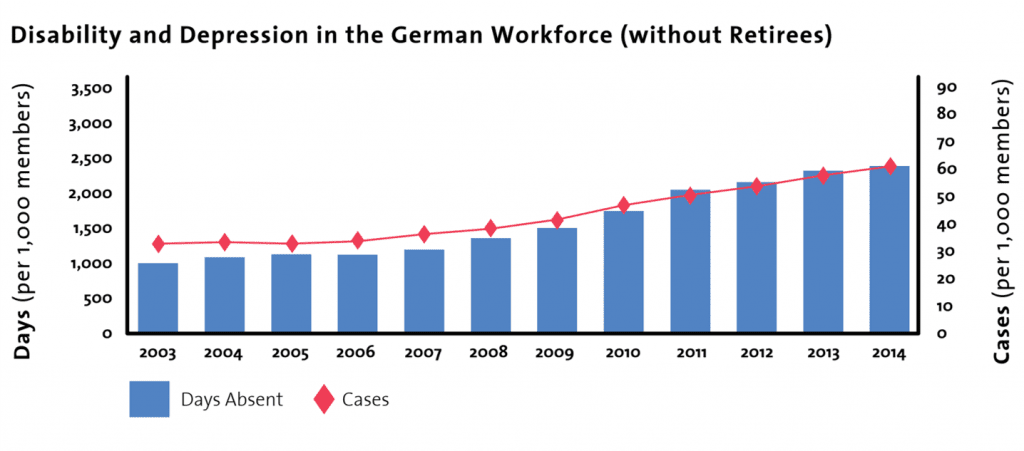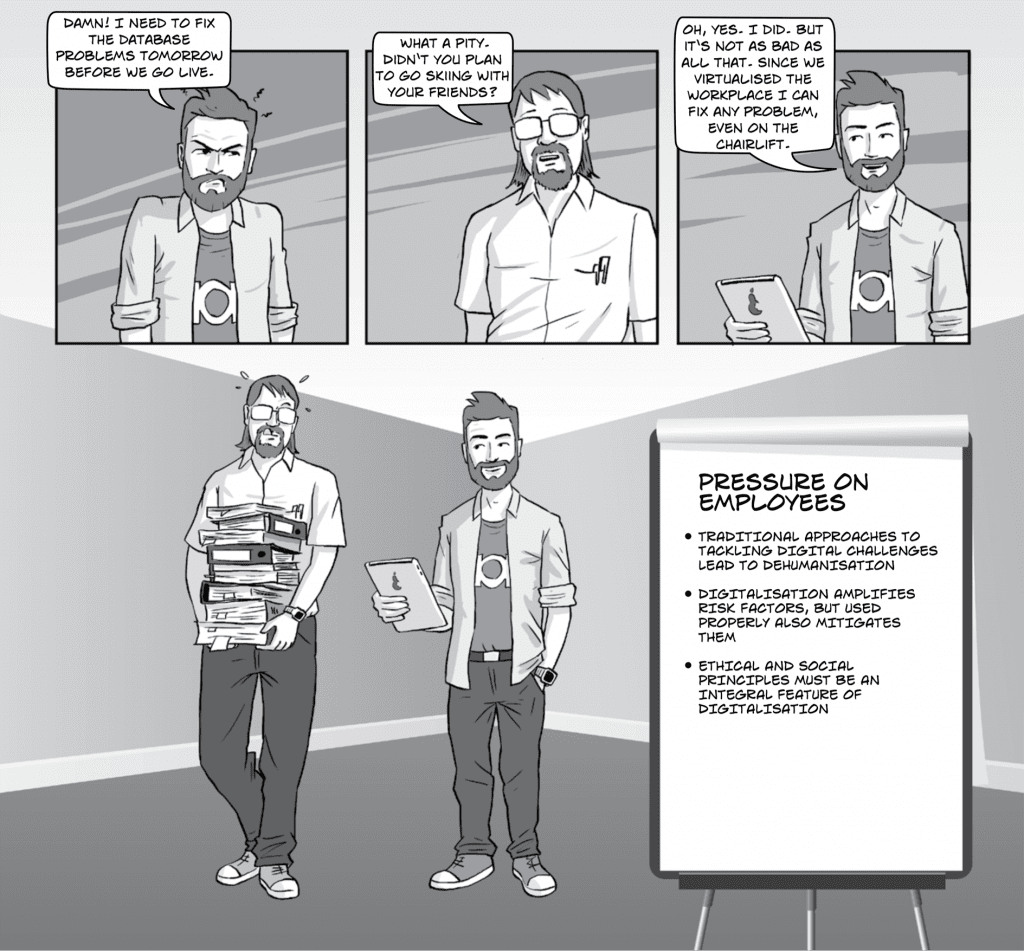Today, global competition drives many traditional companies to increase pressure on their employees. Companies use new digital media such as email, online messaging and smartphones to raise expectations of employee reachability, intensify working processes and enhance control.
Under this model, employees are considered resources. Reorganisations, work intensification, out- and insourcing activities etc. lead to an increasing alienation of employees from their companies. At the same time, market pressure urges companies to adapt to global supply chains and flexibly react to ever-changing customer demands. Innovation cycles are shrinking with tremendous speed. While a company might be flexible enough to meet such challenges for a while – for example by physically moving production to a more favourable location – its employees might not have similar flexibility.
Applying traditional methods to meet the challenges of the digital age will always lead to the dehumanisation of work.[1],[2]
Conversely, many companies do not yet use the merits of the digital age to empower their employees. They apply the same processes, stick with their inherited organisational structure and foster the same old corporate culture, which worked fine in the industrial age. By doing so, they misjudge the fact that a sustainable increase in efficiency driven by digitalisation goes hand in hand with new processes, organisational structures and culture.
The phenomenon of work-related diseases caused by mental stress is omnipresent.
In particular, the popular term ‘burnout’ summarises various mental health conditions from which all industrialised nations suffer. A steady amount of the wrong type of pressure leads motivated and productive employees to become sick and non-productive. The result is tremendous damage for the individuals as well as for the companies and society at large. For example, current figures in Germany show that the average depressed person was unable to work for 60 days of the year in 2014. This is an increase of 135% compared to 2003.[3],[4]

In 2014, 1.6% of Germany’s working population fell ill with some form of depression, resulting in the loss of 40 million workdays.[5] The figures in other industrialised countries are similar.[6],[7],[8],[9]
Literature separates the risk factors for burnout into two categories.[10] On one side are personal risk factors, such as low self-esteem or the pursuit of perfection. The second category refers to external factors, which include risks due to the working environment, such as permanent overload, contradicting goals, work instructions contrary to personal values, lack of meaning and appreciation, environmental conditions, night and alternative shifts, an ever-changing organisation, permanent disturbance, fear of job loss, lacking autonomy, ubiquitous control, ruthless colleagues, etc.
Interestingly, digitalisation has the capability both to amplify existing risk factors and to mitigate them.
Especially in global companies with virtual teams and flexible workplace concepts, there is a huge potential either to damage the organisation or to strengthen it. Due to new organisational and communication concepts, along with increased transparency, digitalisation opens up the opportunity to create a new identity for the employee alongside the digitally transforming company.
However, this will only succeed if ethical and social principles are an integral part of the digitalisation contract. Digitalisation allows certain risk factors to be turned into advantages:
_____
[1] Illek, C. O.: ‘Die Menschen mitnehmen – Wir laufen Gefahr, als Wissensgesellschaft zu versagen, und gefährden so unsere Zukunft’, Die Süddeutsche Zeitung Online, 2015.
[2] Wander, F.: ‘Transforming IT Culture: How to Use Social Intelligence, Human Factors and Collaboration to Create an IT Department That Outperforms’, Wiley CIO Series, p. 2, 2013.
[3] Grobe, T. G., Steinmann S.: ‘Depressionsatlas – Arbeitsunfähigkeit und Arzneiverordnungen’, Techniker Krankenkasse, 2015.
[4] Rennert, D.: ‘Zahl des Monats Juli 2015’, BKK Dachverband, 2015.
[5] Hahlen, J.: ‘Arbeitsmarkt – ILO-Arbeitsmarktstatistik’, Statistisches Bundesamt, 2015.
[6] ComPsych: ‘Loss of productivity among employees in North America due to stress in 2014’, Statista, 2014.
[7] Johnson, M. W.: ‘Burnout Is Everywhere – Here’s What Countries Are Doing To Fix It’, The Huffngton Post Online, 2013.
[8] Health and Safety Executive: ‘Work-related stress, anxiety and depression statistics in Great Britain 2016’, Health and Safety Executive, 2016.
[9] Prinz, C.: ‘How Your Mental Health May Be Impacting Your Career’, PBS Newshour, 2013.
[10] Stock, C.: ‘Burnout: Erkennen und verhindern’, 2nd ed., Haufe-Lexware, pp. 29-66, 2015.


